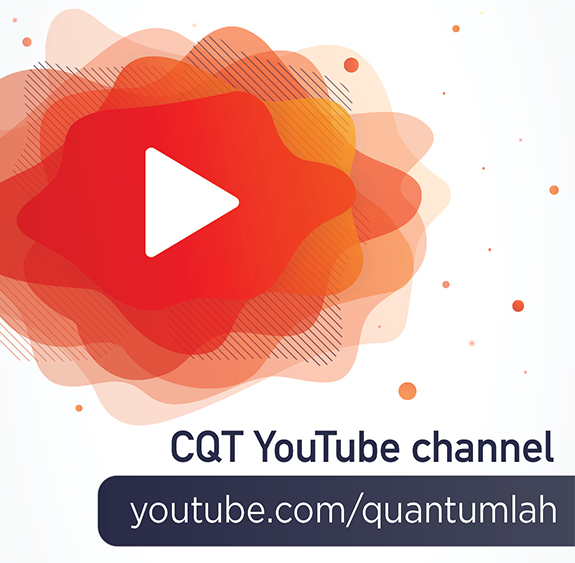Small, flat entanglement source could be boon for quantum computing
Researchers from the Centre for Quantum Technologies and Nanyang Technological University, Singapore (NTU Singapore) have generated entangled photons from a two-dimensional (2D) material. The team’s method could be useful for chip-based photonic quantum computing. The work led by CQT Principal Investigator Gao Weibo is published in Nature Photonics.
Meet a CQTian: Guo Naixu
Guo Naixu is currently a a third-year PhD student in Patrick Rebentrost's group working on on quantum algorithms and quantum learning theory. Naixu is also a guqin player. His interest in this instrument started as an undergraduate in Japan. He says, "It was very lucky that I found out there is a great Japanese guqin master, Muka Fushimi, in Kyoto and he lived near my home. I directly knocked on his door and began this music journey. I quite enjoy this kind of fate."
![]()
CQT Principal Investigator Dimitris Angelakis and his team report that a qubit-efficient optimisation algorithm they created in earlier work can tackle the financial transaction settlement problem.
![]()
CQT Fellow Di was recently commended in the MIT Technology Review Innovators Under 35 (TR35) Asia Pacific list for his work in integrated quantum photonics. Congratulations!
French-Singaporean Quantum Symposia kick off in Singapore
CQT is proud to be one of the organisers for the French-Singaporean Quantum Symposium (FSQS) 2024. From 5 to 7 November, over 170 delegates gathered in Singapore to discuss how strategic quantum partnerships could be built between the two countries. Two more editions are planned with FSQS 2025 taking place in Paris, France, and FSQS 2026 in Singapore.
Preprints
- Demonstration of entanglement distribution over 155 km metropolitan fiber using a silicon nanophotonic chip.
- Quantum Bayes' rule and Petz transpose map from the minimal change principle.
- Informational non-equilibrium concentration.
- Matrix majorization in large samples with varying support restrictions.
- Continuity of entropies via integral representations.
- A Limit on the Power of Entanglement-Assistance in Quantum Communication.
- Bayesian retrodiction of quantum supermaps.
 |
|
| Centre for Quantum Technologies, NUS Science Drive 2 Block S15-03-18 Singapore 117543 |
|
| cqtsec@nus.edu.sg | |



